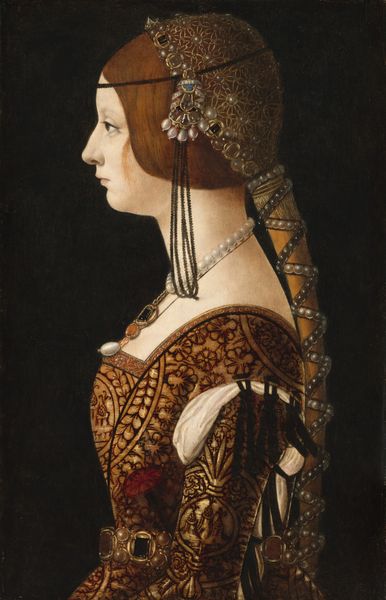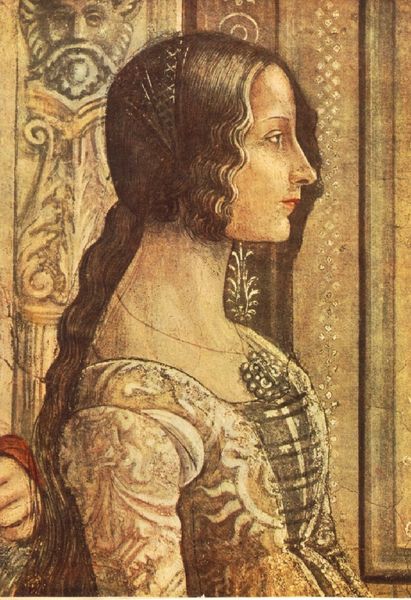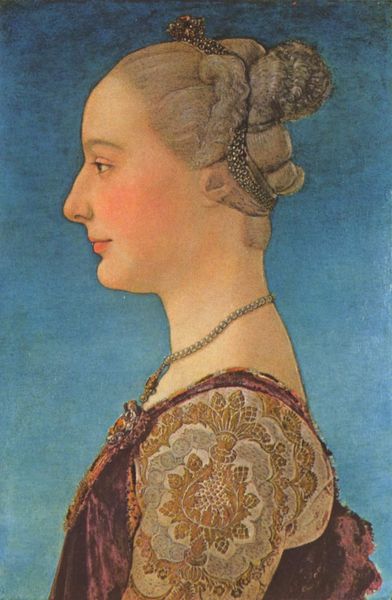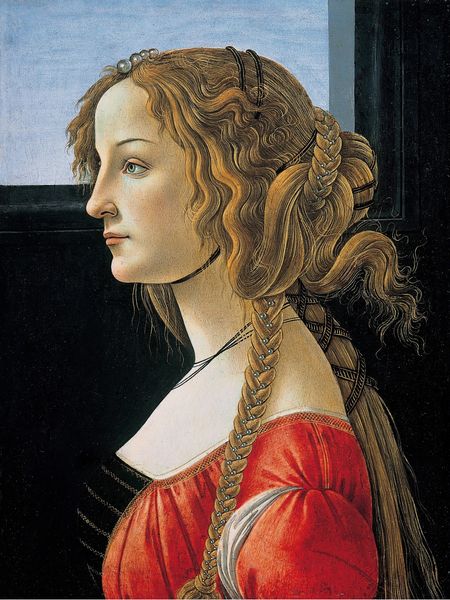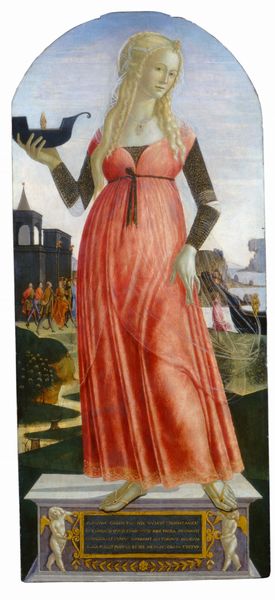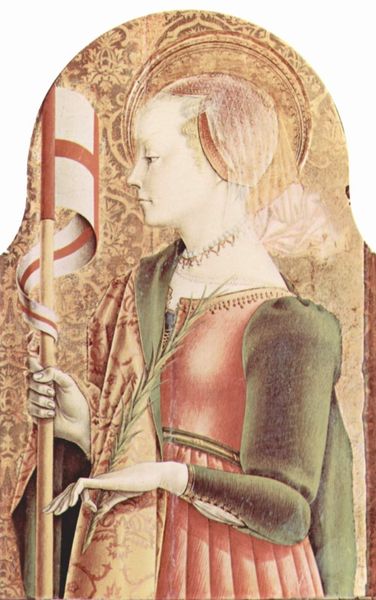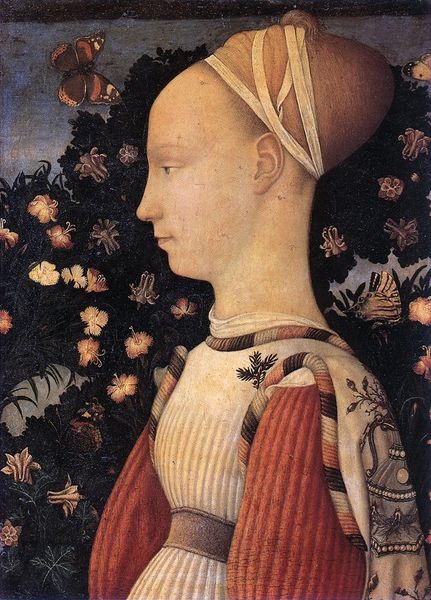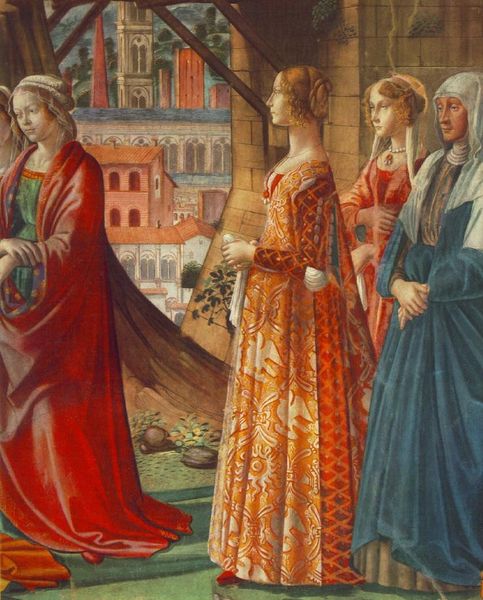
Portrait of Giovanna Tornabuoni 1490
0:00
0:00
domenicoghirlandaio
Thyssen-Bornemisza Museum, Madrid, Spain
tempera, painting, oil-paint
#
portrait
#
high-renaissance
#
tempera
#
painting
#
oil-paint
#
painted
#
oil painting
#
painting art
#
history-painting
#
italian-renaissance
#
female-portraits
Dimensions: 77 x 9 cm
Copyright: Public domain
Curator: Welcome. We’re standing before Domenico Ghirlandaio’s “Portrait of Giovanna Tornabuoni,” an oil and tempera on wood panel from about 1490. It is currently housed at the Thyssen-Bornemisza Museum in Madrid. Editor: Immediately, what strikes me is how coolly elegant it is. The colour palette, the texture of the dress—there is such careful precision in the making of this portrait. Curator: Indeed. Ghirlandaio’s meticulous style places Giovanna within the context of her family’s wealth and power. Giovanna, who unfortunately died in childbirth shortly before this portrait was created, becomes an idealized representation of Renaissance womanhood. Editor: And consider the materiality—oil and tempera allowing for the fine details of the brocade. Look at how that luxury item, along with her jewels, underscores the commodification of women within the marriage market, and highlights the immense value placed upon noble women bearing male heirs. Curator: Precisely. The inscription on the wall behind her offers a window into the period’s views on female virtue: "Ars utinam mores animunque effingere posses pulchrior in terris nulla tabella foret. MCCCCLXXXVIII"–"O art, if you could portray the character and mind, no painting on earth would be more beautiful.” It almost reads like an epitaph, underscoring the expectation that her inner qualities should match her outward beauty. Editor: You're right. I'm now considering the societal demands made upon women in her social position. Also, I can’t help but think about the skilled workshops, apprentices and laborers that went into preparing the panel, mixing the paints, grinding pigments—not to mention the textile production of her gown. Curator: Absolutely. Examining her material worth highlights that noble women held immense social and economic power, however constrained that power might be. They facilitated dynastic success. Editor: Reflecting on this artwork makes me conscious of the unseen hands and complex processes required to make a “simple” portrait. Curator: I’m struck, once again, by how artworks function as documents, preserving aspects of complex histories and societal expectations, but with a unique intersectional lens.
Comments
No comments
Be the first to comment and join the conversation on the ultimate creative platform.

